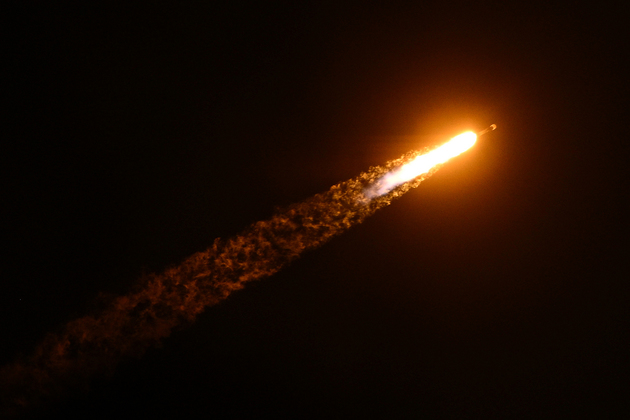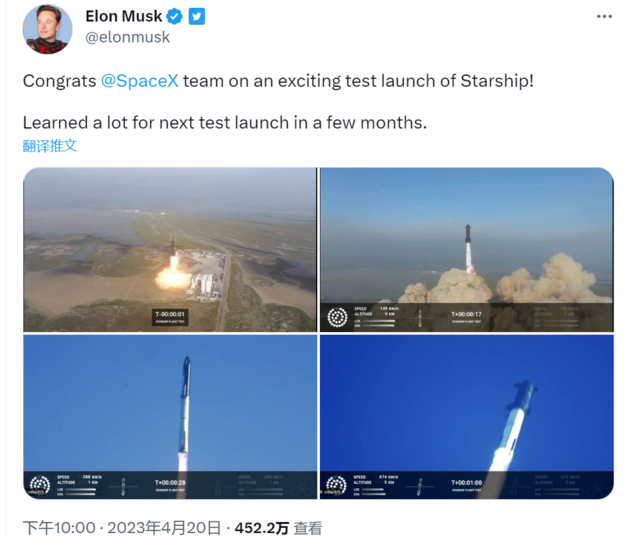
Photo/VCG111381030196
On April 20, SpaceX conducted the unmanned test flight of the Starship rocket in Texas, USA. Three minutes after launch, the rocket experienced a "rapid unscheduled disassembly", followed by an explosion, and the mission was aborted.
SpaceX said the launch team artificially detonated the Starship after it failed to launch.
After the explosion, SpaceX CEO Elon Musk congratulated the team "on an exciting test launch" in a tweet. "Congratulations to the SpaceX team after an exciting 'Starship' test launch! Learned a lot for the next test launch in a few months," Musk said.

Photo/Twitter
It is worth noting that compared with previous traditional rockets, both the main body of Starship can be reused. Based on this, Musk said that the launch cost of Starship is quite low. Once the relevant tests are successful, large-scale production will be conducted, and a space fleet composed of 1,000 Starships will be built at a rate of 100 ships per year. Around 100,000 people and related materials will be transported to Mars to realize the dream of colonizing Mars from the late 2020s.
"Musk's vision of emigrating to Mars is very remarkable," said Zhang Chuanjun, a space technology expert.
According to Zhang, the distance from the earth to the moon is 380,000 kilometers, and at a normal rocket speed, it will take 5 days and 5 nights to complete the mission. To fly to Mars, there are 400 million kilometers to travel, which usually takes half a year. And it will take nearly a year to go back and forth. So during this period of time, how people eat and breathe, whether they can live to reach Mars, whether they can create such an environment in the spacecraft, this is actually a very difficult but very great undertaking.
In addition, how to accurately land on Mars and whether the abovementioned environment can be overcome requires subversive and innovative technologies, and each step is very difficult. The failure of a detail will affect the final result. Even if the launch failure is resolved, new problems may arise, Zhang noted.
Technology verification is a process of constantly identifying, researching, and solving problems, and advancing step by step. Although this launch failed, Zhang believes that SpaceX will learn from it, the success rate of the next launch should be higher.


 川公网安备 51019002001991号
川公网安备 51019002001991号





